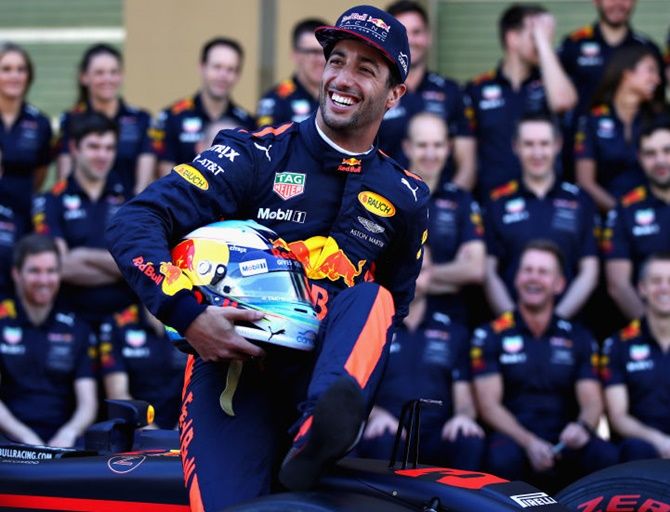Such protection has become a priority since the deaths of drivers in other series

It is safe to say that Formula One’s clunky ‘halo’ head protection device, the most obvious novelty of the 2018 season, has divided opinion.
Strong enough to support the weight of a London double-decker bus, the prominent T-shaped structure around the cockpit is also ugly enough for Mercedes team boss Toto Wolff to want to take matters into his own hands.
“I’m not impressed with the whole thing,” the Austrian declared at the launch of his team’s gleaming W09 car. “And if you give me a chainsaw, I would take it off.”
Niki Lauda, the retired triple world champion who is non-executive chairman of Mercedes F1, is another fierce critic of the device.
“We are just trying hard to get new fans for the sport with fast cars and getting closer to the spectators, and now this is destroyed by an overreaction.” the 69-year-old Austrian said last year.
Concern has been expressed that drivers might not get a clear view of the start light gantry, or overhead stop/go signals in the pits, when they look up but few such worries emerged during pre-season testing.
“We’ve done some testing in the simulator... and it was no problem on any circuit with the start lights. You could always see at least with one eye and that’s enough,” said Mercedes’ Valtteri Bottas.

Drivers have mostly taken it in their stride, and Mercedes’ four times world champion Lewis Hamilton suggested people would soon stop talking about it.
“You definitely notice it. You’ve definitely lost some visibility with it, naturally,” said the Briton of the driver’s eye view.
“But you get used to it... your mind learns to work around it so it doesn’t really affect you in corners... I think it will become second nature at some stage.”
The halo, tested extensively by the governing International Automobile Federation (FIA) who also tried out alternatives, is designed to shield a driver’s head from flying debris and the danger of being struck by bouncing wheels.
Such protection has become a priority since the deaths of drivers in other series.
“It’s going to save lives, no doubt,” said Williams’ Canadian teenager Lance Stroll.
“The fact that our head was exposed before at these high speeds, god forbid anything would happen if a piece would hit us in the head.”
The look of the device, fixed at three points with its central upright in front of the driver’s vision and an overhead loop, has been compared to the thong on a flip-flop beach sandal.
Made of titanium and weighing in at around seven kilograms, plus fittings, the halo has been a trial for designers who like to distribute weight as low as possible on the car.
A standard part made by external suppliers, teams are allowed to swathe the device in an aerodynamic fairing and attach mini-wings of up to 20mm.
Immediate drawbacks are that getting in and out has become trickier, partly because of the appendages on the cage-like structure, which has also raised questions about emergency extractions.

Toro Rosso driver Pierre Gasly said he had ripped several race suits already.
“I don’t like it (the halo). It’s just a big mess to get in the car and get out,” he told reporters.
“With all the winglets you have on the halo you cannot really pull, to get out you cannot really touch it,” added the Frenchman.
Bottas said the FIA had made allowances for that in tests of drivers’ ability to extricate themselves quickly.
“I think it takes maybe three or four seconds more to get out of the car,” said the Finn. “To get in, it’s a bit more tricky but it’s OK.”













 © 2025
© 2025